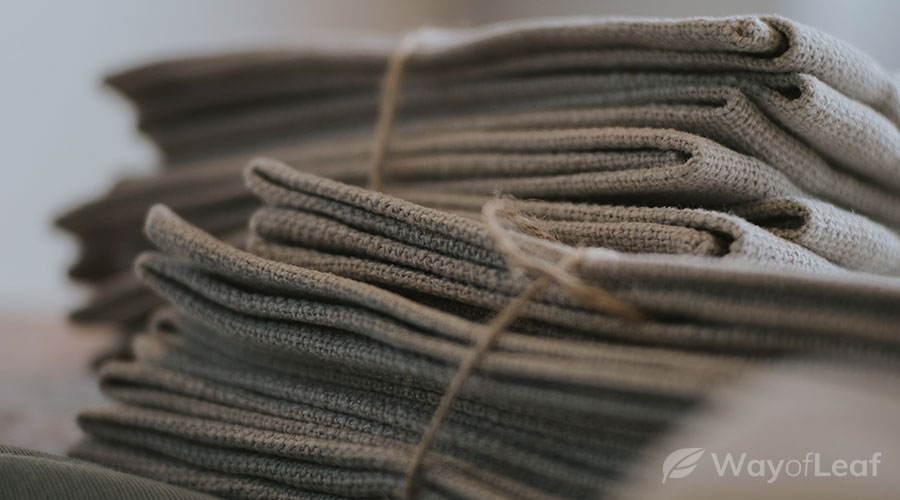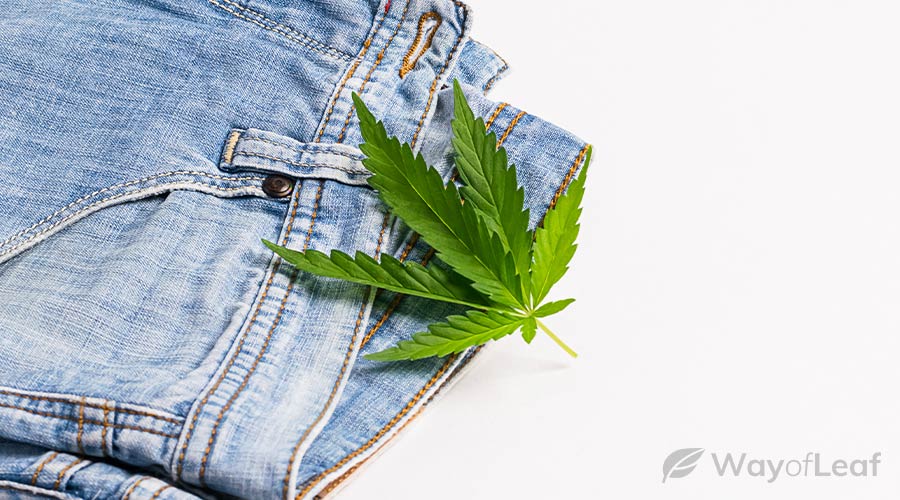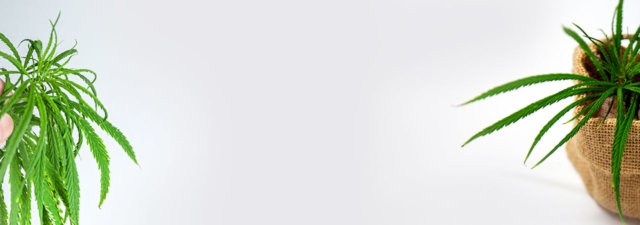Hemp fabric is making a comeback after decades away. The 2018 Farm Bill means that it is permissible to grow hemp with a license throughout the United States. The main caveat is that each state must submit its plan to the US Department of Agriculture. To date, almost every state has done so.
Indeed, there were only three states where hemp wasn’t yet legal to grow until recently. Mississippi was one of the holdouts, along with South Dakota. Both have since relented, leaving Idaho as the only state where hemp production is illegal.
Much of the hemp cultivated today is for the CBD industry. However, there is already a surplus, which means other sectors will use it.
Given the number of advantages associated with hemp fabric, it is only a matter of time before that particular market swells.
Hemp clothing requires a makeover, at least in terms of perception. It is associated with unfashionable designs that are the antithesis of trendy. In reality, there are plenty of talented designers eager to work their magic on hemp.
What this article aims to do is outline how manufacturers make hemp clothing. It is an eight-step process that’s labor-intensive. Let’s take a closer look.
How Is Hemp Fabric Produced?
It all begins with hemp cultivation and culminates in a spinning process. This is designed to produce a higher quality yarn. Incidentally, there is a partly synthetic hemp substitute called rayon or hemp viscose. It is cheaper to make but has many downsides in terms of environmentally friendliness and quality.

Now, let’s go through the eight-step process to create the yarn used for hemp clothing.
1 – Cultivation
One of the great things about hemp is its ability to thrive in various environments. The main exceptions are high mountain and extreme desert regions. Hemp absorbs what’s in the soil, so growers need to test it before planting the seeds. The soil must not have a high degree of potassium sulfate, sulfur, or rock phosphate.
In general, the growing cycle for hemp is 108 – 120 days. Hemp is a relatively easy plant to grow organically because it doesn’t need many nutrients. It is also highly resistant to pests and diseases. Farmers tend to plant seeds densely to get plants with tall, slender stems. Such a crop will have plants with a high amount of fine fibers, ideal for creating fabric.
2 – Harvesting
After approximately 90 – 100 days in the ground, the hemp plant’s head is usually matured. Growers must closely analyze the crop to see seed heads developing from the bottom and moving up. After maturation, they expose their seeds. Farmers can then air dry them.
Farmers require combines to complete the harvesting process. Organically grown hemp produces around 500 pounds per acre. Inorganically grown hemp produces twice that amount. Typically, growers can expect anywhere from 1 to 3 tons of hemp fiber per acre.
3 – Retting
This process involves using moisture and microbes to break down the pectin (chemical bonds) that hold the hemp stem together. This leads to easier separation of the bast from the woody core, called the shiv or hurd. While some manufacturers perform retting via the direct use of enzymes, most follow one of these two methods:
- Water Retting: This includes soaking the stems in a water source such as a pond, stream, or special water tank. Water retting can take up to 10 days. It works best when you use warm water filled with bacteria.
- Field Retting: The farmer leaves the hemp on the ground to decompose naturally. This process can take 4 – 6 weeks and requires close monitoring.
After finishing the retting step, the farmer dries the stalk to the point where the moisture content is below 15%. Then they bail the stalk and get it ready for the next part of the process.
4 – Breaking the Fiber
This step involves passing the stalks through fluted rollers. They crush and break the hurd into small pieces and separate some of the fiber. Up until the early 20th century, it was an extremely labor-intensive process.
However, everything changed with the invention of the Schlichten decorticator in 1917. This machine enables workers to keep the leaves on the stalks during the breaking process. At the time of the invention, it seemed as if the decorticator would take hemp to the next level. Sadly, prohibition followed within 20 years.
5 – Scutching
The next step involves beating the broken stems. By ‘scutching’ them in this manner, you separate the fibers you want from the hemp plant’s woody core.
6 – Hackling
This is the term for combing the stems to get rid of any unwanted particles. It also ensures the fibers are further aligned into a long sliver. The short fibers produced during separation are called tow. The long fibers are called line, and a single strand can reach over five meters long.
7 – Roving
In the penultimate step, the workers twist the sliver and draw it out to boost its strength. They wind it on spinning bobbins to get it ready for the last piece of the puzzle.
8 – Spinning
This is the process of twisting and drawing out the hemp fibers. The goal is to create a smooth, continuous yarn. When using hemp, you can perform wet or dry spinning. Wet spinning is best for finer yarn, while dry spinning is ideal for coarser yarns. In general, manufacturers use wet spinning because hemp offers bast fibers.
It is possible to complete the process via manual spinning using a spindle. This is a thin, round rod with tapered ends. It also has a weight attached to it.
Mechanical Spinning
In the modern era, mechanical spinning is preferred because its manual counterpart is time-consuming and requires a lot of manual labor. Even so, the mechanical spinning process is far from straightforward. It involves doubling, which refers to combining the fibers. This is a crucial step to ensure the yarn’s thickness is uniform.
Then it is necessary to begin drawing or drafting the fibers. This means passing them through several rollers to straighten the yarn. Each subsequent roller turns faster than the previous one. Here are the rest of the steps in bullet point form:
- Attach the fibers to the roving frame for wet spinning and drying.
- Boil the roved fiber in caustic soda. Use hydrogen peroxide to produce higher standard yarn.
- Place the fibers in a drum with a sealed lid. Then put it into a second drum, which is filled with water.
- Add the caustic soda and hydrogen peroxide to the water.
- Switch on the machine and allow the water to boil. Pass the fibers through a trough of warm water before spinning.
- There are spinning bobbins that perform the task of the spindle. They pinch and draw the yarn from the hemp fibers. The process also dries the yarn.
- The last step is winding. This involves transferring the lengths of yarn rolled or looped from the bobbins to a package.
With the fabric ready for use, some clothing manufacturers try to add an organic dye. This is a challenging process because it isn’t easy to dye hemp fabric. Once this is finished, the final step is to stitch the fabric into the desired design.
Final Thoughts on Making Hemp Clothing
The process outlined above is the tried and trusted way to create the fibers necessary for hemp clothing. The result is an extremely strong fabric that’s durable enough to last many years. Once you are finished with the item, you can recycle the fabric.

The shift to sustainable clothing in the United States has already begun, and hemp is likely to become a star of the show. Hemp clothing is comfortable, stylish, and will hopefully be easy to find in the near future.


![What Is Melatonin in CBD Oil? [Exploring the Benefits]](https://wayofleaf.com/wp-content/uploads/2020/03/wol-banner-what-is-melatonin-in-cbd-oil-640x225.jpg)
![Why Does Weed Seem to Slow Down Time? [EXPLAINED!]](https://wayofleaf.com/wp-content/uploads/2019/04/wol_why-does-weed-slow-down-time-640x225.jpg)



![The Marihuana Tax Act of 1937 [All You Need to Know]](https://wayofleaf.com/wp-content/uploads/2019/01/history-of-the-marihuana-tax-act-640x225.jpg)




